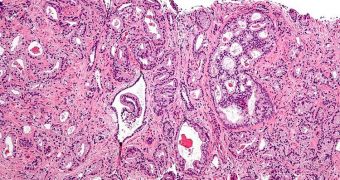The results of a large-scale clinical trial conducted in the United States appear to indicate that consuming high-doses of dietary supplements containing vitamin E is associated with an increased risk of developing prostate cancer for men.
These conclusions were published just a couple of days after another study showed that women who consume vitamin supplements have a 2.4 percent higher risk of death over 19 years than their peers who do not use such supplements at all.
Details of the new investigation were published in the October 12 issue of the esteemed Journal of the American Medical Association (JAMA). Data on which the study was based were collected from the Selenium and Vitamin E Cancer Prevention Trial (SELECT).
The survey included more than 35,000 men, all of which were older than 50. The goal of the research was to establish whether selenium, vitamin E, or a combination of the two chemicals, could lower the risk of prostate cancer in men.
When the time to analyze the effects of vitamin E came, investigators learned that men who took high doses of vitamin E had a 17 percent higher chance of developing prostate cancer than peers who took only placebo pills./
“It’s very clear that high-dose vitamin E does not lower the risk of prostate cancer and, in fact, carries real risks for some men. For these reasons, men in the general population should not take high doses of vitamin E to promote prostate health,”Gerald Andriole, MD, explains.
The expert holds an appointment as the Robert K. Royce Distinguished Professor and chief of urologic surgery at the Siteman Cancer Center. The SCC is located at the Washington University in St. Louis (WUSL) School of Medicine (WUSM). Andriole is also based at the Barnes-Jewish Hospital.
The National Cancer Institute (NCI), the National Center for Complementary and Alternative Medicine, the National Heart, Lung, and Blood Institute (NHLBI), the National Institute of Aging and the National Eye Institute funded the investigation.
All of these organizations are part of the US National Institutes of Health (NIH). The study proper ended back in 2008, but it took researchers the better part of three years to browse through all the data, compensate for influencing factors, and then draw their conclusions.

 14 DAY TRIAL //
14 DAY TRIAL //